
Sleep in Literature
The oblivion of sleep is a parallel of death. Time stands still. In sleep, we remain in the cocoon of eternity. And yet, the idea of sleep holds within it the promise of an awakening, a resurrection.
States of pre-adolescent sexuality, psychological disorder, drug- or alcohol-induced stupor, and even some diseases are all variants of the sleep experience.
But its more than oblivion: sleep connects us to other worlds. Hamlet says, “To die, to sleep;/ To sleep: perchance to dream”. In sleep , we swim in the vast ocean of the unconscious, where our deepest drives, fears, regrets, and wishes churn around us.
.
.
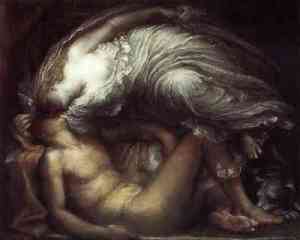
Cicero’s Tusculanae Quaestiones, “On the contempt of death” (45 BC)
In his philosophical writings, Cicero touches on the Greek myth of Endymion. It goes something like this: Selene, the goddess of the moon, is said to have fallen in love with the mortal, Endymion, whom she spied asleep in a cave on Mount Latmos. So that he might never grow old, she begged Zeus to keep him that way always, and the powerful God agreed.
Keats further immortalizes Endymion in his poem of the same name:
A THING of beauty is a joy for ever:
Its loveliness increases; it will never
Pass into nothingness; but still will keep
A bower quiet for us, and a sleep
Full of sweet dreams, and health, and quiet breathing.
.
.
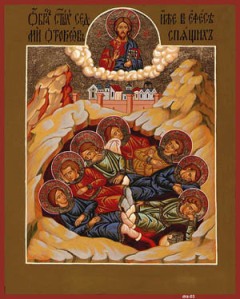
Gregory of Tours, The Legend of the Seven Sleepers of Ephesus (Sixth Century)
As legend has it, around 250 AD, Jambilicus, Martinian, Constantine (also known as Exacustodianus), Anthony, John, Dionysius & Maximillian, seven youths fleeing an Imperial slaughter, hide in a cave on Ochlon Hill outside Ephesus. The Emperor slyly orders the cave’s only entrance to be walled in. More than 200 years pass. One day, some shepherds disturb the stones from the entrance. The youths wake up refreshed and in full health, as if they have slept but a night. After a week, they re-enter the cave and fall asleep again, this time in the sleep of death.
.
.
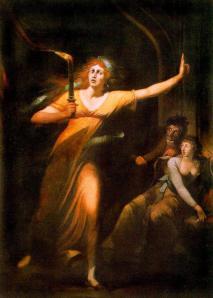
William Shakespeare, Macbeth (1623)
Lady Macbeth’s guilt over her role in the murder of the innocent king is deeply rooted in her unconscious—to such a degree, in fact, that it brings about a psychological disorder in her personality and she begins to sleepwalk. But Shakespeare intends not only to reveal the guilty conscience of one character. He wants to lay bare the entire tragic process in its extremity: how evil repays.
.
.
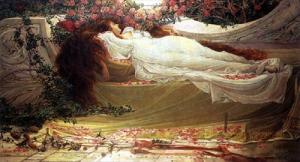
Charles Perrault, “La Belle au bois dormant” (1697)
Writing at the time of Louis XIV, Perrault’s “La Belle au bois dormant” is the earliest known version of this fairy tale. In the story, a King and Queen are blessed with a longed for daughter, whom they call Aurora. Unhappily, the evil fairy Carrabosse curses the infant, declaring that one day Princess Aurora will prick her finger on a spindle and die. However, one of the seven good fairies called on to bless the infant is able to mitigate the curse. Princess Aurora will not die after all; she will merely fall into a deep sleep for one hundred years, from which she will then be awakened by the kiss of a dashing Prince.
.
.
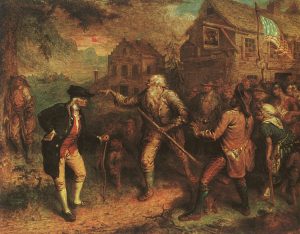
Washington Irving, Rip Van Winkle (1819)
Early Americans established a literary tradition in which civilization conflicts with freedom. The male characters are often seen fleeing from the civilizing influence of towns and women. In this story, Rip Van Winkle, a colonial Dutch villager, escapes his nagging wife by wandering into the forest to hunt. He drinks elves brew and falls into a deep sleep from which he awakens twenty years later to a changed and bewildering world.
.
.
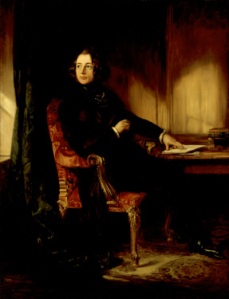
Charles Dickens, The Pickwick Papers (1836)
“The object that presented itself to the eyes of the astonished clerk, was a boy—a wonderfully fat boy—habited as a serving lad, standing upright on the mat, with his eyes closed as if in sleep.”
In the ‘wonderfully fat’ character of Joe, Dickens describes the main symptoms of Obesity Hypoventilation Syndrome (OHS), a condition related to sleep apnea. The condition was originally referred to as Pickwickian Syndrome after its appearance in The Posthumous Papers of the Pickwick Club, the first of Dickens’ many novels.
.
.
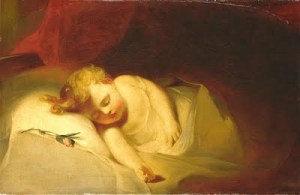
George Eliot, Silas Marner (1861)
Variants of sleep figure in this gorgeous moral tale: On New Year’s Eve, the desperate Molly, carrying her sleeping child, walks through a blizzard to find the husband who has disowned her. Tired and cold, Molly seeks comfort from a phial of opium, succumbs to a stupor outside of Silas Marner’s cottage, falls asleep in the snow. In the meantime, Marner stands in a cataleptic fit at the open door of his cottage, grieving the loss of his gold. Molly’s child, a toddler, attracted by the fire in Marner’s house, wanders through the snow and falls asleep in front of the hearth.
.
.
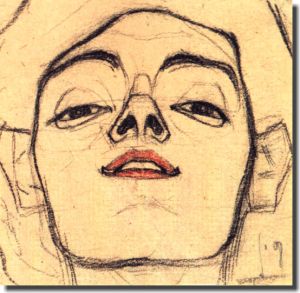
Anton Chekhov, ‘Sleepy’ (1888)
In this short story, Chekhov presents sleeplessness as a kind of madness. A young nursemaid must tend to a wailing child all through the night and, then, in the morning and through the rest of the day, complete many other chores. At nightfall, she must take up her duties with the baby once more, who wails again hour after hour. The screams of the infant conspire with the calls of birds and animals in the darkness and the shadows in the room and the poor nursemaid’s own sorrowful memories until she can bear it no longer. She must sleep—she must—and she does.
.
.
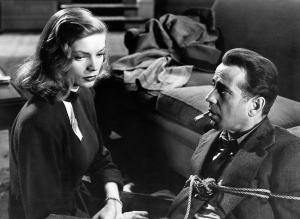
Raymond Chandler, The Big Sleep (1939)
Schemes, greed, nymphomania, betrayal, drug abuse, lies, double-crossing, more lies, more greed, more betrayal. All on the way to “sleeping the big sleep”.
.
.

Oliver Sacks, Awakenings (1973)
In this work of non-fiction, Sacks chronicles his efforts in the late 1960s to help patients at a New York hospital who had been victims of the 1920s encephalitis lethargica epidemic (a form of ‘sleeping sickness’). He used an experimental drug called L-DOPA, which had the effect of waking the patients. This awakening was tragically short-lived, however. All of the patients eventually returned to their frozen ‘sleep’ state.
I appreciate the article! Thank you for the poem by Keith, the childhood dream of the “Belle au bois dormant”, tHe Geaorges Elliot painting. Don’t we leave by our dreams. THere will be no awakening without sleep !
[…] **** In search of sleep in literature **** Posted in Musings…, Rediscovered, Wanderings by adairjones on November 8, 2009 […]
Thank you for this article. Sleep is perhaps the only universal human experience (there are those who receive nutrition via a drip after all) and for a while I have been trying to compile a list of poems and stories about sleep (sleep rather than dreaming as such)